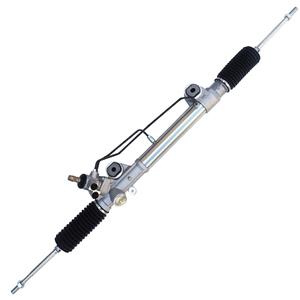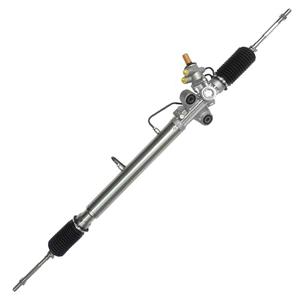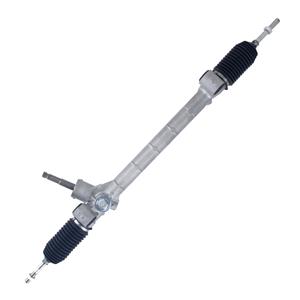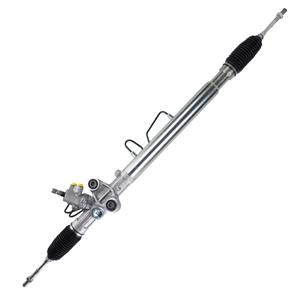When did Mercedes-Benz adopt power steering?
Mercedes-Benz, as one of the world's most prestigious luxury car manufacturers, has always been at the forefront of technological innovation. The introduction of the power steering system is one of the important turning points in the history of automotive technology, which greatly improved the handling and driving comfort of the car. As a high-end brand, how and when Mercedes-Benz adopted power steering technology has become a highly watched event in the history of automobiles.
This article will explore the background of Mercedes-Benz's adoption of power steering, its historical evolution, and its important role in promoting the application of power steering technology.
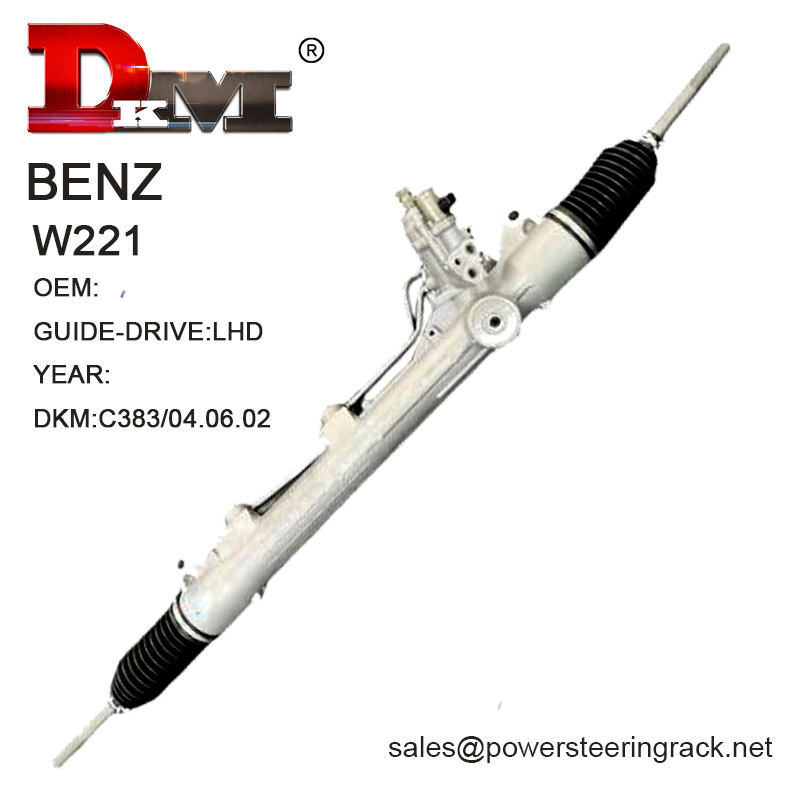
What is the background of the emergence of the power steering system?
In the early 20th century, with the booming development of the automobile industry, the design of vehicles became more and more complex and the weight gradually increased. This trend made steering operations more difficult, especially when driving at low speeds or parking, the driver needed to spend a lot of effort to turn the steering wheel. Therefore, developing technologies that can reduce the operating burden of drivers became one of the important tasks of automobile manufacturers at the time.
The power steering system was first designed by American engineer Francis W. Davis in the 1930s. This system provides power to the steering wheel through hydraulic or electric devices, allowing the driver to turn the vehicle more easily. Since its emergence, this technology has been gradually introduced into different car brands and models.
What is the background of the Mercedes-Benz brand?
Mercedes-Benz is one of the pioneers in the global automotive manufacturing industry. It was founded in 1926 and its predecessor can be traced back to the first internal combustion engine car developed by Karl Benz and Gottlieb Daimler. Throughout the long history of Mercedes-Benz, innovation and technological progress have always been the core concept of its brand.
Since its establishment, Mercedes-Benz has continuously carried out technological innovation in various fields, from the improvement of internal combustion engines, the improvement of vehicle safety to the optimization of driving comfort. The introduction of power steering is undoubtedly another important technological breakthrough in the history of Mercedes-Benz. For such a brand that pursues a perfect driving experience, how and when to introduce power steering systems into its models is crucial.
When did Mercedes-Benz adopt power steering?
Mercedes-Benz first adopted power steering systems in its mass-produced models in 1958. The system was first used in the Mercedes-Benz 300 Series sedan (W189), a high-end luxury sedan favored by aristocrats and business elites. The power steering system used in the 300 Series is Hydraulic Power Steering. The introduction of this technology significantly improves the driver's operating convenience, especially when driving in the city and turning at low speeds.
The 1958 Mercedes-Benz 300 Series sedan introduced power steering technology, making the vehicle easier to control. The driver no longer needs to work hard to operate the steering wheel when driving at low speeds, parking or making emergency turns. The introduction of this technology also indicates that Mercedes-Benz is gradually moving towards a more efficient and comfortable driving experience.
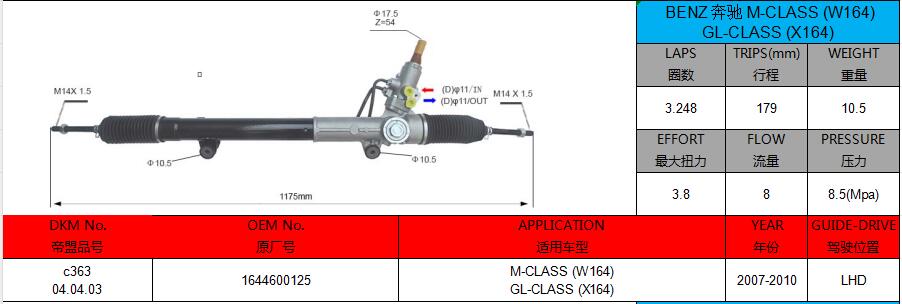
How does the hydraulic power steering system work?
The hydraulic power steering system used by Mercedes-Benz is based on the hydraulic principle and uses an engine-driven hydraulic pump to provide power to the steering system. Its basic working principle is as follows:
1. Hydraulic pump: When the engine is running, the hydraulic pump starts working through a belt drive to pump hydraulic oil to the power steering system. Hydraulic oil plays a role in transmitting pressure during steering operations, helping the driver to turn the vehicle more easily.
2. Control valve: When the driver turns the steering wheel of the vehicle, the steering shaft drives the control valve to work, and the hydraulic oil enters the corresponding power-assisting chamber according to the action of the control valve. This process can adjust the size of the hydraulic pressure according to the direction and strength of the steering to provide the necessary power.
3. Power cylinder: The power cylinder drives the steering gear through the pressure difference to assist the driver in completing the steering action. Compared with traditional mechanical steering, hydraulic power steering greatly reduces the driver's physical exertion, especially when driving at low speeds.
What impact does the power steering system have on the driving experience of Mercedes-Benz?
After Mercedes-Benz introduced the power steering system, the driving experience has been significantly improved. The following are several major effects of power steering on vehicle driving:
1. Improved driving comfort: The introduction of the power steering system significantly reduces the driver's operating burden, especially in situations where frequent steering is required, such as city driving and parking. The driver can control the vehicle more easily and reduce fatigue from long-term driving.
2. Improved handling: The power steering system not only improves the ease of driving, but also improves the handling of the vehicle. When driving at high speeds, the system can adjust the size of the power according to the speed to ensure that the vehicle maintains good stability and control.
3. Enhanced safety: More precise steering operation is particularly important in emergency situations. The power steering system provides drivers with instant power assistance, allowing them to operate the vehicle more quickly and accurately when they need to turn quickly, reducing the risk of potential accidents.
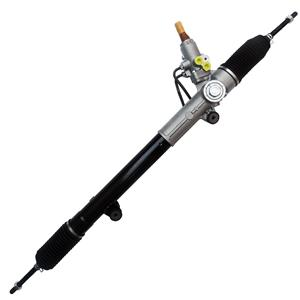
How Mercedes-Benz promotes the evolution of power steering technology
Since the first introduction of the power steering system in 1958, Mercedes-Benz has continuously improved and optimized this technology. Although the hydraulic power steering system effectively solves the shortcomings of the early mechanical steering system, it relies on the engine's hydraulic pump to operate, resulting in a decrease in fuel efficiency. With the increase in energy efficiency and driving performance requirements, Mercedes-Benz began to turn to more advanced steering systems.
In the 1990s, Mercedes-Benz began to gradually transition to Electric Power Steering (EPS). Compared with hydraulic power steering systems, electric power steering no longer relies on the engine to provide power, but directly provides steering assistance through electric motors. This technology has the advantages of energy saving, lightweight and higher response speed, which further enhances the driving experience of the vehicle.
Challenges of power steering technology
Although the introduction and development of power steering technology has brought significant convenience to driving, it also faces some challenges in its application. In particular, hydraulic power steering systems, due to their reliance on complex hydraulic pumps and pipelines, are prone to problems such as hydraulic oil leakage and system wear in long-term use. These problems not only affect the normal operation of the system, but may also cause the steering power to weaken or completely fail, thereby increasing driving risks.
In order to meet these challenges, Mercedes-Benz continues to improve the design and durability of hydraulic power steering systems, while actively developing alternative technologies such as electric power steering systems to provide more reliable and efficient solutions.
Market impact of Mercedes-Benz power steering system
Mercedes-Benz took the lead in adopting power steering technology in its high-end models, which not only improved the market competitiveness of its own brand, but also promoted the entire luxury car market to move towards higher standards. As power steering systems become more popular, other luxury car brands have followed Mercedes-Benz's lead and applied this technology to their own models.
Mercedes-Benz's power steering system brings not only technological innovation, but also new expectations for consumers' driving experience. In the high-end luxury car market, the improvement of comfort and handling has become an important consideration for consumers, and the power steering system is a key component of this transformation.

